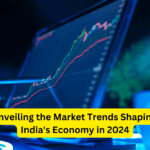Introduction: The Evolving Landscape of Business Models
In the ever-dynamic world of commerce, business models are not static. They evolve, adapt, and transform to meet the demands of the market, technological advancements, and shifting consumer behaviors. As we navigate through 2024, seven innovative business models stand out, each offering unique advantages and challenges. The exploration of these innovative business models is crucial for understanding how businesses can thrive in an increasingly competitive market.
1. Subscription-Based Models
Historical Context
Subscription-based models are not new. From the days of newspaper and magazine subscriptions to the modern era of digital services, this model has a rich history. Businesses have long recognized the value of recurring revenue, and the subscription model has proven to be a reliable method for achieving this.
Modern Applications
Today, subscriptions permeate every sector—from streaming services like Netflix to software solutions like Adobe Creative Cloud. These innovative business models allow companies to build stronger relationships with their customers, offering continuous value and maintaining engagement. Businesses leverage recurring revenue to create a more predictable financial landscape, allowing for better long-term planning and investment.
Benefits and Challenges
The benefits of subscription-based models are manifold. Predictable revenue streams provide financial stability, while enhanced customer loyalty reduces churn rates. However, these innovative business models also come with challenges. Businesses must continuously deliver value to retain subscribers, and managing churn can be difficult. Offering fresh content, updates, and personalized experiences are essential for maintaining a loyal customer base.
2. Platform Ecosystems
Defining Platform Ecosystems
Platform ecosystems create value by facilitating interactions between two or more interdependent groups, typically consumers and producers. These innovative business models rely on network effects, where the value of the platform increases as more users participate. Examples include Amazon, which connects buyers and sellers, and Airbnb, which links travelers with hosts.
Success Stories
Companies like Uber and Apple have mastered these innovative business models, creating vast networks that benefit all participants. Uber’s platform connects riders with drivers, while Apple’s ecosystem integrates hardware, software, and services to create a seamless user experience.
Future Trends
The future of platform ecosystems lies in deeper integration and enhanced user experiences, driven by AI and machine learning. These technologies can help personalize offerings, improve efficiency, and create more meaningful interactions between users. As these innovative business models continue to evolve, we can expect even greater levels of convenience and connectivity.
3. Freemium Models
Concept and Execution
Freemium models offer basic services for free while charging for premium features. These innovative business models attract a broad user base, converting a percentage into paying customers. The freemium model is particularly effective in the digital space, where the cost of providing basic services is relatively low.
Monetization Strategies
Effective monetization strategies include tiered pricing, exclusive content, and advanced functionalities that justify the cost of the premium version. These innovative business models rely on providing enough value in the free version to entice users, while making the premium features desirable enough to convert free users into paying customers.
Case Studies
Successful examples of freemium models include Spotify and LinkedIn. Spotify offers a vast library of music for free, with ads, while charging for an ad-free experience with additional features. LinkedIn provides basic networking capabilities for free, with premium services such as advanced search and learning modules available for a fee. These companies have effectively leveraged freemium models to grow their user base and revenue.
4. Direct-to-Consumer (DTC) Models
Disruption in Retail
Direct-to-Consumer (DTC) models bypass traditional retail channels, selling directly to consumers. These innovative business models have disrupted the retail industry, giving brands greater control over their margins and customer experiences. By eliminating intermediaries, DTC brands can offer competitive prices and foster stronger relationships with their customers.
Building a Brand
Success in DTC requires a strong brand presence and a deep understanding of the target audience. Companies like Warby Parker and Glossier exemplify these innovative business models, leveraging social media, content marketing, and community building to create loyal customer bases.
Long-Term Sustainability
While DTC models offer higher profit margins, they require significant investment in marketing and customer acquisition to sustain growth. Building and maintaining a DTC brand involves continuous engagement with customers, innovative product offerings, and exceptional customer service. These innovative business models can be highly rewarding but also demand a strategic approach to long-term sustainability.
5. Circular Economy Models
Principles of the Circular Economy
Circular economy models focus on sustainability, emphasizing the reuse, repair, and recycling of products. These innovative business models aim to reduce waste and conserve resources by creating closed-loop systems where products and materials are continuously cycled back into the production process.
Implementation in Various Industries
Industries such as fashion and electronics are adopting circular practices. Companies like Patagonia, which encourages the repair and reuse of its products, and Fairphone, which designs modular phones that can be easily repaired and upgraded, lead the way in implementing these innovative business models.
Environmental and Economic Impact
Circular economy models offer significant environmental benefits by reducing waste and lowering resource consumption. Economically, these innovative business models can also reduce costs in the long term, promoting resilience and sustainability. By adopting circular practices, businesses can not only contribute to environmental preservation but also enhance their competitiveness in a market increasingly driven by sustainability.
6. Peer-to-Peer (P2P) Models
The Rise of P2P
Peer-to-Peer (P2P) models facilitate direct transactions between individuals. These innovative business models have gained traction in sectors such as finance, travel, and accommodation. P2P models leverage technology to connect individuals directly, bypassing traditional intermediaries.
Key Sectors Utilizing P2P
Notable sectors utilizing P2P models include P2P lending platforms like LendingClub and vacation rental services like Airbnb. These innovative business models provide users with more options and often lower costs compared to traditional services.
Challenges and Opportunities
While P2P models offer lower costs and increased accessibility, they also face regulatory challenges and trust issues. Ensuring the safety and reliability of transactions between individuals is crucial for the success of these innovative business models. Despite these challenges, the opportunities for growth and innovation in the P2P space remain substantial.
7. On-Demand Economy
Evolution of On-Demand Services
The on-demand economy provides instant access to goods and services. From food delivery to ride-sharing, these innovative business models have transformed consumer expectations. The convenience and speed offered by on-demand services have become essential in today’s fast-paced world.
Consumer Expectations
Today’s consumers demand speed, convenience, and flexibility. Meeting these expectations requires robust technology and logistics infrastructure. Companies operating in the on-demand economy must continuously innovate to stay ahead of the competition and meet the evolving needs of their customers.
Scaling and Sustainability
Scaling on-demand services can be challenging due to high operational costs. However, with the right strategies, businesses can achieve long-term sustainability. These innovative business models require a balance between rapid growth and operational efficiency to ensure that they can meet demand without compromising quality or profitability.
Conclusion: Choosing the Right Business Model for 2024
As businesses look towards 2024, selecting the right business model is crucial. Each model discussed offers distinct advantages and challenges. By understanding these innovative business models and aligning them with their unique strengths and market demands, businesses can thrive in an ever-changing landscape. Whether through subscription-based services, platform ecosystems, freemium models, direct-to-consumer strategies, circular economy practices, peer-to-peer interactions, on-demand services, or hybrid approaches, the key is to innovate and adapt. The future belongs to those who can embrace and implement these innovative business models effectively.
For more content follow Humstory.













